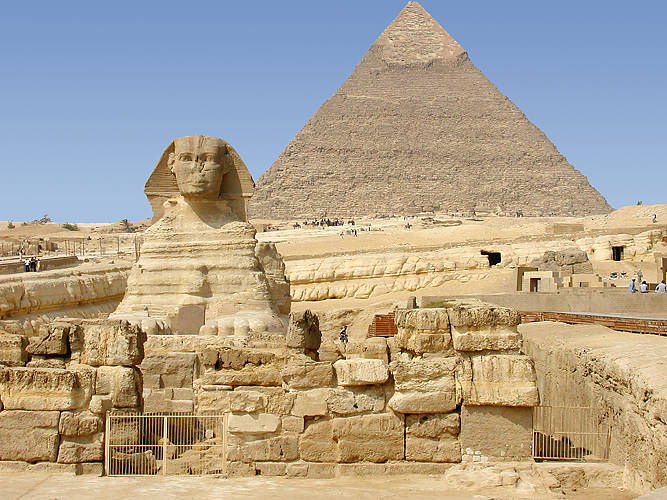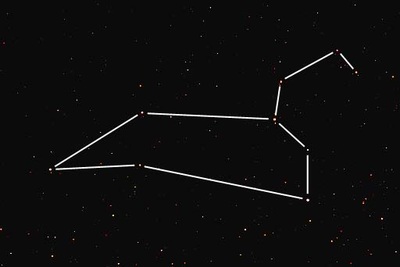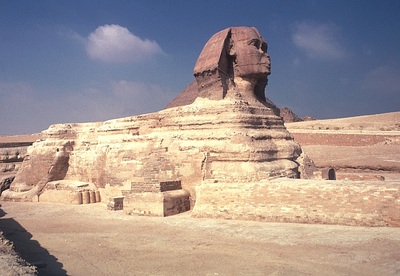Now the Sphinx is what we would call a zoomorphic figure, despite of its human head. Unlike the pyramids, in which stones had to be carried and placed, the Sphinx was carved from the limestone bedrock. If you would look at the image below, you can see the same striations that are on the chest of the Sphinx are the same as on the surrounding walls. Even though this is obvious once you know where to look, we have no idea how long it took to carve it. With several thousands of years of how we used to do things lost, I am afraid that our new way of doing things along with our new technology we are ignorantly blinded by all that is new to understand more of the old.
Good news though, we have several theories of why it was built. As I said in the beginning of this blog I talked about the alignment of stars. I believe that since Khufu and his successors are buried in the Giza pyramids this is the reason it was “known” it was on of them who carved the Sphinx. Not only that but the sophistication of the alignment. Many do not think that the ancient Egyptians were bothered with astrology and the pyramids are only coincidentally in line with Orion's Belt, but perhaps at they would look to the stars they saw a familiar shape. The constellation Leo's shape has an uncanny resemblance to that of the Sphinx (see comparison below). This ties in with the following theory of why. Some believe that it was built was a sort of “astronomical observation device that marked the position of the rising sun on the day of the spring equinox in the time of Leo the Lion, which lasted from 10,970 to 8810 BCE. This interpretation is given support by the leonine shape of the Sphinx.” Another assumption made by orthodox archaeologists is it is mearly a memorial or “some sort of talisman or guardian deity.”
After writing this blog, I am at war within myself. What I mean by this is I want us to find out the answers to all the questions we have, but at the same time, I do not. The hunt, the intrigue is something that keeps us going. If we do find out the answers instead of asking how, we will most likely be asking what next?
Please feel free to comment on what you thought of the blog, or other physical anthropological subjects you would like me to cover.



 RSS Feed
RSS Feed
